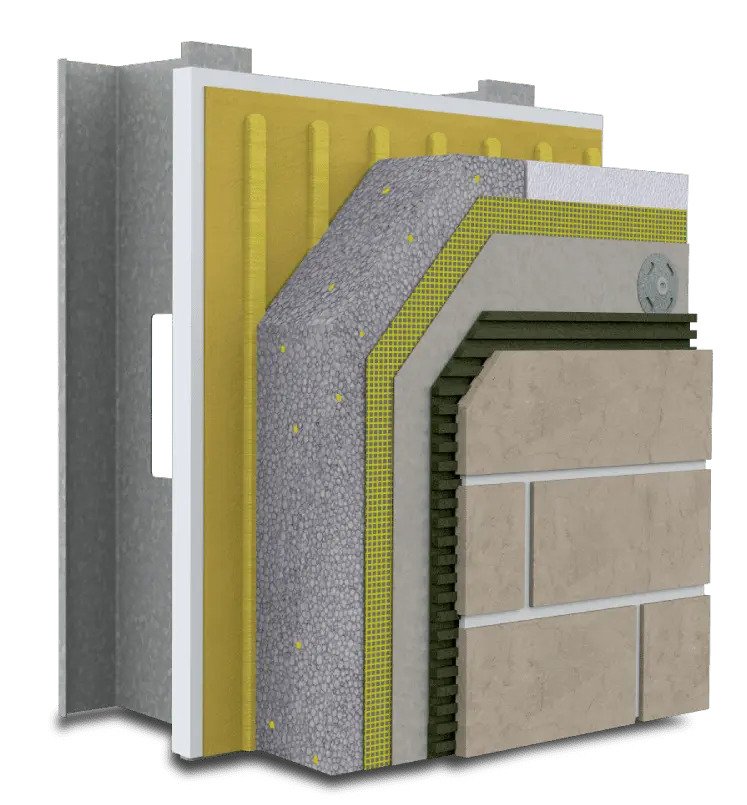Air barriers have become increasingly important in the construction industry due to a heavier emphasis on greener building practices and a heightened understanding of energy efficiency. While many building practices are critical to greener buildings, the heart of this trend lies with the continuous air barrier. What exactly is a continuous air barrier, and why is it so crucial?
What is a Continuous Air Barrier?
A continuous air barrier is a system that has been designed to control air leakage into and out of the building envelope. The building envelope represents the barrier between the inside of the building and the outside world. Unlike intermittent or patchy barriers, a continuous barrier provides uninterrupted coverage, to help ensure that every nook and cranny is sealed against unwanted airflow. This uninterrupted protection is vital for maintaining the optimal indoor environment and energy efficiency.
Understanding What “Continuous” Means

The term "continuous" in continuous air barriers refers to a seamless and uninterrupted system. Unlike fragmented or piecemeal barriers, this system ensures that there are no breaks, gaps, or holes. Any leaks or weak points in an air barrier provide opportunities for conditioned air to leak out or for unconditioned air to leak in.
While air barriers can be applied in an interrupted manner, careful sealing at all joints is required. Not only do these seals require careful attention to ensure they are installed properly, the seals also provide a potential failure point over time. A continuous air barrier is like wrapping a building in a protective shield that doesn't let unwanted air penetrate or escape and is more likely to retain its effectiveness over time.
Benefits of Continuous Air Barriers
Continuous air barriers provide a building with many different benefits, some of which might surprise even seasoned industry professionals.
Improved Energy Efficiency
When conditioned air is allowed to leak out, energy is wasted. When unconditioned air is able to seep in, the conditions inside the building are less stable and harder to control. Either condition can lead to hot or cold spots throughout the building and higher energy consumption. By reducing uncontrolled air leakage, the barriers minimize the energy required for heating or cooling, which leads to significant energy savings.
Enhanced Comfort
With the elimination of drafts and cold spots, indoor spaces maintain a more consistent temperature for occupants' comfort. The load on the HVAC system is also reduced due to the consistent conditions.
Moisture Control
When moisture-rich air comes into contact with temperatures below its dew point, liquid water can form. Continuous air barriers prevent moisture-laden air from entering wall assemblies, which can help reduce the potential for mold growth and structural damage.
Improved Indoor Air Quality
By reducing the infiltration of outdoor pollutants and allergens, the barriers contribute to healthier indoor environments. Any outdoor air brought into a building should be harnessed in a controlled manner and properly filtered before circulating through the building.
Extended Building Lifespan
By protecting against moisture and temperature fluctuations, continuous air barriers can prolong the life of building materials and the structure as a whole.
Code Compliance
Many building codes now mandate the use of continuous air barriers to make sure that new constructions meet energy efficiency standards. The impact on energy efficiency and building longevity make continuous air barriers a worthwhile addition to building codes for municipalities.
Reduced Carbon Footprint
With improved energy efficiency comes a reduced carbon footprint, which makes the barriers an environmentally-friendly choice.
Sound Insulation
Beyond just air, barriers can also dampen sound, providing a quieter indoor environment. Occupant comfort is enhanced both from the more consistent temperatures and from the less noisy environment.
Resilience
Buildings with continuous air barriers are better equipped to handle extreme weather conditions, from scorching heat to freezing cold.
Potential for Downsizing HVAC Systems
With increased efficiency and reduced energy needs, there's potential to opt for smaller, more cost-effective HVAC systems. The smaller HVAC systems also typically have correspondingly smaller ductwork which further reduces the capital expenditure for a building.
Increased Property Value
Energy-efficient homes and buildings often fetch a higher market value, making this a wise investment for property owners. The buildings are more energy efficient and they are expected to last longer, with fewer maintenance issues.
Applications for Continuous Air Barriers
The applications for continuous air barriers are vast. Whether it's a residential home, commercial building, or an industrial facility, any structure aiming for energy efficiency can benefit from this technology. From skyscrapers in bustling cities to homes in quiet suburbs, the need for an uninterrupted shield against air leakage is universal.
Acelab Makes Continuous Air Barriers Easy
Acelab is a free materials platform that makes architecture better for architects. Our tools enable you to discover, compare, and specify the right materials for your project. Break the cycle of reusing specs and find the best products for your needs, every time.
With Acelab, users get access to intelligent product recommendations, comprehensive product data, technical specifications, and CAD details from leading manufacturers. Plus, all the tools to manage and collaborate at each step.
Join Acelab now and get instant access to all of our tools, experts, and resources.

